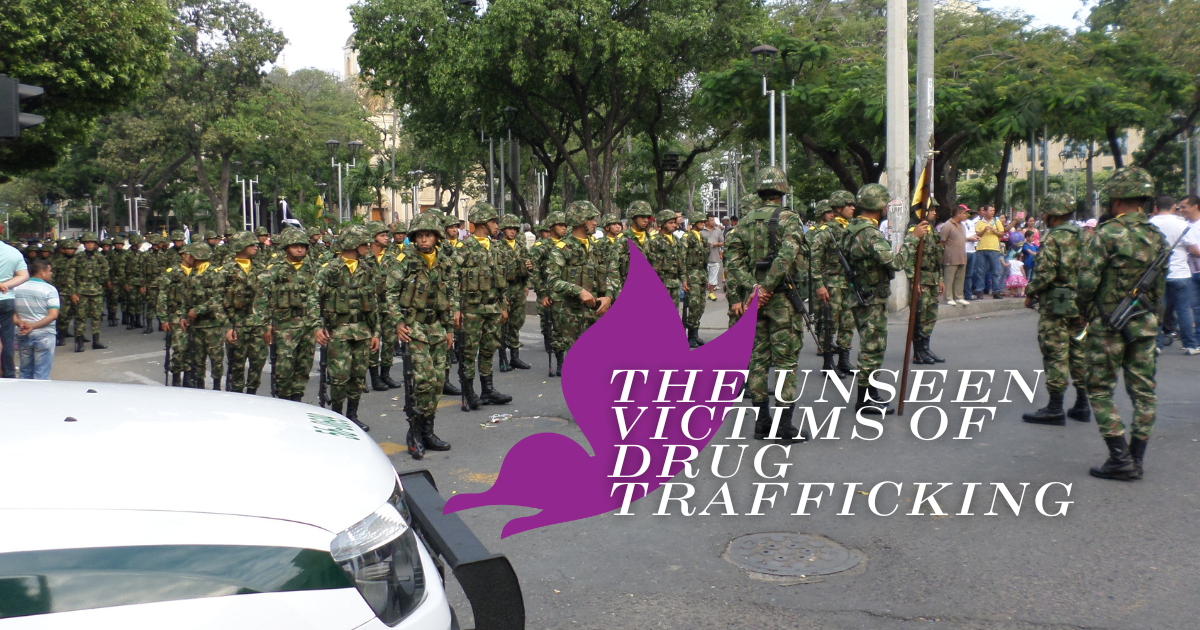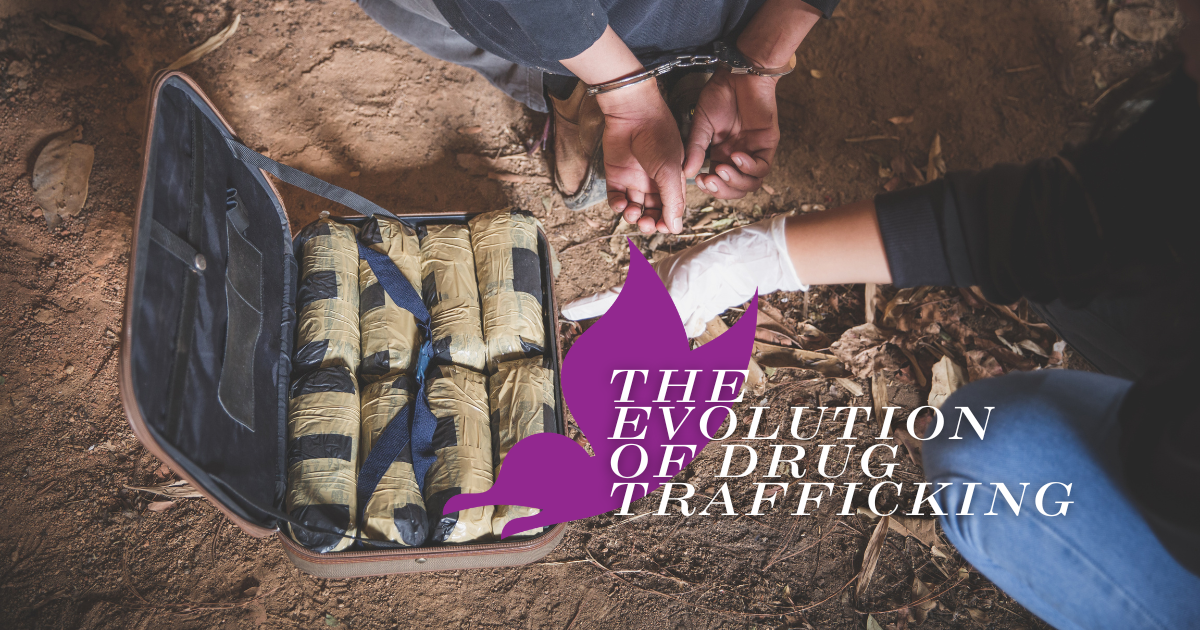Updated: May 22, 2023, at 4:32 p.m.
While the war on drugs may not have officially started until 1971 when Richard Nixon took office, there were many drug prohibition laws passed before the 1970s. However, the war officially began when Nixon declared illicit drugs to be public enemy number one and went on to pass the Comprehensive Drug Prevention and Control Act of 1970. (Interesting side note: Nixon once held a bizarre meeting with Elvis Presley, who asked for a badge to help fight the war on drugs.) This act included the Controlled Substances Act (CSA) which put all drugs into an organized system based on addiction potential and medical utility.
Similarly, the Drug Enforcement Administration was created under the Nixon administration in an effort to minimize interagency feuds and pool together resources to fight illicit drug production, distribution, and use. Following Nixon’s resignation, the drug war wasn’t as prevalent during the Jimmy Carter presidency but things picked back up when Ronald Reagan was elected and served from 1980 to 1988.
As you explore the intriguing history of the War on Drugs, remember that help is available for those seeking addiction treatment. At Landmark Recovery, we offer personalized treatment programs to support you. Call our admissions team at 888-448-0302 for confidential, 24/7 support.
Reagan Era Drug Policies
Unknown author, Official Portrait of President Reagan 1981, marked as public domain, more details on Wikimedia Commons
During the Ronald Reagan presidency in the 1980s, Reagan reinforced and expanded many of the war on drug policies that had been mostly left untouched during Jimmy Carter’s presidency.
“We’re taking down the surrender flag that has flown over so many drug efforts. We’re running up the battle flag,” Reagan said during an early address in his presidency.
One of the most significant pieces of legislation of the entire drug war was passed by the Reagan administration in 1986.
Anti-Drug Abuse Act of 1986
The Anti-Drug Abuse Act is one of the most important federal laws that passed in United States history regarding drug punishment. The law was signed by President Richard Nixon in October 1986 and was partially a result of Nancy Reagan’s “Just Say No” campaign efforts. The act gave over a billion in funding for the drug war and substantially increased the number of drug offenses with mandatory minimum sentences, including marijuana.
One of the most controversial aspects of this act is the changes in the sentencing for possession of crack cocaine. The 1986 act instituted a five-year minimum penalty without parole for the possession of five grams of crack cocaine. Meanwhile, the same sentence was given to for the possession of 500 grams of powder cocaine. This 100:1 disparity was criticized by some as racially biased because crack cocaine was more likely to be used by poor Americans, many of whom were African Americans. On the other hand, powder cocaine was more expensive and more likely to be used by affluent white Americans. According to the ACLU, in 1986 before the enactment of the new minimum sentences, African Americans were subject to 11 percent higher federal drug sentences than white Americans, four years later that number grew to 49 percent.
Much of the reason for the increase in the sentencing for crack cocaine was a result of the crack epidemic and the mainstream spotlight that came with it. During this time, many low-income neighborhoods were suffering from increased distribution and use of crack cocaine. That paired with other events like the highly-publicized death of college basketball star and NBA draftee, Len Bias, gave the drug penalties the support they needed to be passed in Congress.
“Just Say No”

White House Photographic Office, Nancy Reagan with Just Say No kids, Wikimedia Commons
Along with reinstating and creating new legislation, the First Lady, Nancy Reagan, chose to launch an anti-drug campaign called “Just Say No” in an effort to educate children on the dangers of drug use. Just Say No was a staple of the Reagan presidency and still has lasting effects and efforts that can be seen today. The movement began in 1982, according to the Reagan Foundation.
“A little girl raised her hand,” she remembered, “and said, ‘Mrs. Reagan, what do you do if somebody offers you drugs?’ And I said, ’well, you just say no.’”
This is how the campaign began. Soon Mrs. Reagan would become relentless in her pursuit for reducing teen and child drug use. In the early- and mid-1980’s, she appeared 110 times and gave 14 anti-drug addresses, including a televised address. Her efforts saw her travel through 65 cities, 33 states and even nine foreign countries.
While the intentions of the Just Say No campaign were admirable, they may not have had the intended effects and may have led to unforeseeable, adverse consequences. One such problem is it may have impacted the rise of prescription drugs.
While the campaign did try to paint illegal drugs and drug users as evil, it failed to mention the dangers of prescription drugs and the control they can have over people, something that would become more problematic in the late-90’s and 2000’s.
Criticisms
The drug war started with Nixon’s declaration of war and the establishment of legislation like the Controlled Substances Act and the creation of the DEA. The Reagan administration followed with reinforced and updated legislation. There were many effects of the drug war from the 1970’s and 1980’s that could not be fully understood until years later, and are still, to some extent, not fully understood. One of the biggest criticisms of the Reagan administration’s drug reform policies deals with the increased penalties and zero tolerance policy which many believe led to a higher incarceration rate fueled by nonviolent drug arrests.
According to The Drug Policy, the number of people behind bars for nonviolent drug law offenses increased from 50,000 in 1980 to over 400,000 by 1997. According to Pew Research and many other sources, the country saw a sharp growth in overall incarceration between 1980 and 2008.
In 1980, there were 500,000 incarcerated in the United States, that number rose to 2.3 million in 2008. Similarly, the incarceration rate rose from 310 per 100,000 people to 1,000 people in the same period. Since 2008, those numbers have seen some relief. Much of the decline in recent years is a result of newer legislation that has reduced prison sentences for thousands of inmates serving for drug-related crimes.
According to statistics from the World Prison Brief, the United States has the highest prison population of any country in the world, despite not having the highest population in the world. There are 2.1 million people in prison in the United States which has a population of 325 million people, compared to 1.6 million in China, a country that has a population of 1.38 billion people.
Where We Are Now
There were a number of lasting effects from the drug war in the United States, one of which was increased arrest and incarceration rates with racial disparity.
Since the new millennium, drug regulation policies that have been implemented in the country is characterized by less of a “tough on crime” approach, but rather reformation based on some legislative rollbacks, leniency, and loosening up enforcement policies.
Fair Sentencing Act
To address the disparity, and perhaps racial bias, in the Anti-Drug Abuse Act of 1986, President Obama signed the Fair Sentencing Act (FSA) of 2010 into federal law. Before the FSA, the sentencing disparity between crack and powder cocaine was 100:1, the new law changed it to 18:1. The act also eliminated the five-year mandatory minimum sentence for simple crack cocaine possession.
Reduced Sentencing
In another effort to rollback some of the zero tolerance policies and harsh drug sentences that characterized the drug war in the 1970’s and 1980’s, the United States Sentencing Commission submitted to congress an amendment to federal sentencing guidelines that reduced sentences for some drug-related crimes.
Changes like the Fair Sentencing Act and reduced sentencing amendments passed by the USSC, helped to halt the rising incarceration rate in the United States and are also proving to be effective in reducing the incarceration rates in the country.
More recently, a bill that received bipartisan support would have helped to continue this trend of reduced sentences and could be effective in lowering the recidivism rate. The First Step Act would overhaul sentencing laws and decrease the sentencing for drug offenders who violate the “three strikes” law.
The bill would also pick up where the Fair Sentencing Act left off and reduce the disparity of sentences for people convicted of crimes involving crack and powder cocaine. A change that could affect 2,000 federal inmates.
“A great many fair-minded observers have looked back over the last two decades and have acknowledged that long mandatory minimum prison sentences for nonviolent drug offenders produce injustices and our criminal justice resources are better allocated focusing on violent criminals,” said Republican Sen. Ted Cruz. “I think that’s a policy change that makes sense.”
While this bill may have a major impact on federal incarceration rates for drug offenders, there would need to be massive changes to local legislation in order for real results to be seen.
However, the support for the bill represents a pivot in the belief system of many republicans and democrats who hailed the tough on crime and zero tolerance approaches that were put forth by Nixon and Reagan as they supported the harsh sentences of the 1980’s and 1990’s.
Many lawmakers on both sides of the aisle have acknowledged the lack of success that many of the oppressive drug laws had on drug abuse in the country.
State Laws and Marijuana
Despite the fact that marijuana is still an illegal drug at the federal level, there are a number of states that have passed medical and even recreational marijuana legislation. As of December 2018, there are 33 states with medical marijuana laws and 10 states, and the District of Columbia, that have recreational marijuana legislation in place.
Because of the differences in state and federal laws surrounding marijuana, entities like the DEA have taken a strong stance and have fought state medical and recreational marijuana laws, continuing to raid medical marijuana dispensaries, despite the fact that a federal court told them that they need to stop.
Even while facing pressure from federal enforcement and a lack of backing from the national banking industry, the legalization of marijuana in states like Colorado have been an economic success so far.
Colorado’s Department of Revenue has released data regarding marijuana sales which show that it is a billion dollar industry, with sales reaching over $1.2 billion in 2017 from January to October. Moreover, marijuana businesses have generated over $600 million in state tax revenue since 2014, with the first $40 million each year going to public school infrastructure.
Rise of Prescription Drugs
As mentioned before, some drug policies were effective in creating a sense of danger surrounding illicit drugs like heroin or cocaine, however the early drug war failed to mention the problems with prescription drugs. Since the early 2000’s, deaths attributed to prescription painkillers have been rising and have gotten to astronomical levels. According to recent data from the Center for Disease Control and Prevention, there were over 72,000 drug overdose deaths in 2017, over 30,000 of which were directly attributed to synthetic opioids, most notable fentanyl.
Americans were not properly prepared for how prevalent prescription drugs would become. The increased availability and potency of the drugs made for a deadly combination. Not only were pharmaceutical companies marketing drugs like OxyContin into the consumer market, they were also downplaying and making false claims about the addictive characteristics of the drug.
As prescription drugs began to flood the market in the early 2000′ s, the increased availability led to misuse and abuse of dangerous opioids. Soon the problem would evolve to include illicit drug manufacturers cutting drugs like cocaine and heroin with synthetic opioids like fentanyl in order to maximize profit and increase the addictiveness of their drugs. However, this also lead to a massive increase in overdose deaths and now fentanyl is currently the most deadly drug in the country.
Many advocacy groups are working to make prescription drugs a more talked about issue. Some agencies like the DEA, have recognized the threat and have shifted strategies to try to curb the influence prescription painkillers have on the country. For example, each year the DEA hosts a national prescription drug take back day to dispose of any leftover prescriptions in a safe and convenient manner. Other agencies and organizations are making similar changes in order to address the problem.
Treatment
While drugs were still persecuted in the country throughout the 2000’s and 2010’s, the Obama Administration, in 2009, signaled that they would not be using the term “war on drugs” as they claimed it is counter productive and was more antagonistic toward users. Rather than focus on treatment and helping people who were using drugs, the drug war persecuted and punished them without offering a path forward, which lead to high recidivism among drug users.
However, as of recently, there has been an increased focus on treatment and healing. One thing that has been getting more federal focus is federal prison drug treatment programs. According to the Federal Bureau of Prisons, drug treatment programs in prison have been effective in:
- Reducing relapse
- Reducing recidivism
- Reduce inmate misconduct
- Increase levels of education and employment upon return to the community
- Improve health and mental health symptoms and conditions
Despite the intentions of making treatment a stronger option, data still suggests that many who need treatment aren’t getting it. According to the New York Times, only about ten percent of people who need treatment are getting it. If the country wants to destroy this epidemic, treatment needs to be a greater priority.
How Effective Has the Drug War Been?
When you measure the the outcomes of the drug war versus its initial goals, you have mixed bag. One one hand, according to the Drug Policy Research Center, there was an initial decline in those reporting drug use between the years 1985 and 1992, however in 2002 that number was up by about a third and has continued to increase with the rise of prescription opioids.
One major problem of the drug war was that it failed to mention the dangers that can come from legal drugs. The drug war targeted major illicit drugs like heroin and cocaine but when a rise in prescription drugs came in the late 1990’s and 2000’s, the country was not prepared for it.
You can also measure effectiveness by the drug supply, current markets, and drug prices. According to the Drug Policy Research Center, says that the overall trend in the cocaine and retail prices during the past two decades have moved downward, suggesting a greater availability of drugs on the street in the United States.
It should be mentioned that use of marijuana, cocaine, and alcohol all decreased initially in the late 1970s, and, while they have seen a slight resurgence in recent years, the numbers have remained tame. However, once again, on the other hand, the number of emergency room mentions from 1982 on saw major increases.
Collateral Damage
Along with the easily visible effects that came with the drug war, there are a number of adverse effects that were a result of this social event.
One such effect that has been mentioned already is the increased incarceration rate that the country saw following changes to drug legislation. According to Politifact, the U.S. state and federal prison populations saw major increases in the years following the drug war. The prison population grew from over 218,000 in 1974 to over 1.5 million in 2014, a nearly 600 percent increase.
It is also important to note that minorities are overrepresented in the prison population, in part due to some drug laws that may have had racial biases.
Many side effects are due to the rise of opioids and prescription painkillers that the country was not prepared for.
One example of this is the effect that opioids have have had on grandparents. According to a report done by Altarum, more grandparents are having to become the the parents to their grandchildren due to parental drug abuse. The survey found that 20 percent of these grandparents cited drug abuse as the main reason for having to take over care duties for their grandchildren. 32 percent of grandparents surveyed said that they were delaying retirement or were forced to go back to work because of this. Similarly, the survey found that 25 percent of grandchildren had experienced abuse or neglect.
Another side effect of the rise of opioids is Neonatal Abstinence Syndrome (NAS) which has affected many newborns. This issue is caused by pregnant mothers taking opioids and their newborn suffering from withdrawals upon birth. The instances of NAS have paralleled the increased prescription opioid use in the country. Every 25 minutes a baby is born suffering from opiate withdrawal and in 2012, an estimated 21,732 babies were born with the syndrome.
Overall, the war on drugs is something that has not come to an end. Even recently, former Attorney General under Donald Trump, Jeff Sessions echoed sentiments of the Reagan “Just Say No” campaign. The full effects of the war on drugs in the United States will not be seen or fully understood until it is in the rearview and behind us for good.
In Conclusion
The war on drugs is an ongoing effort that officially began in the 1970’s under the Nixon administration. Other presidents, especially Reagan, have made continuous efforts to crackdown on illicit drug manufacturing, trafficking, and use. The efforts of the war on drugs led to mixed outcomes. While the years initially following the drug war saw less drug use, there have been increases in drug use recently, mostly due to the rise of prescription drugs, something that the drug war did not prepare the country for properly. Overall, the lasting effects of the war on drugs in America will not fully be clear until years after it is a thing of the past.
Landmark Recovery offers drug and alcohol rehabilitation with a focus on an individualized and holistic approach to recovery. At Landmark, we are dedicated to being a part of the solution and to helping as many substance-dependent people as possible. Landmark’s goal is to help over 1 million families over the next 100 years. Our facilities and staff have the tools and knowledge needed to help usher and adjust you or your loved one into their new sober life. If you would like to learn more about our personalized drug and alcohol rehab, call iur admissions team today at 888-448-0302.

Choose Recovery Over Addiction
We're here 24/7 to help you get the care you need to live life on your terms, without drugs or alcohol. Talk to our recovery specialists today and learn about our integrated treatment programs.




